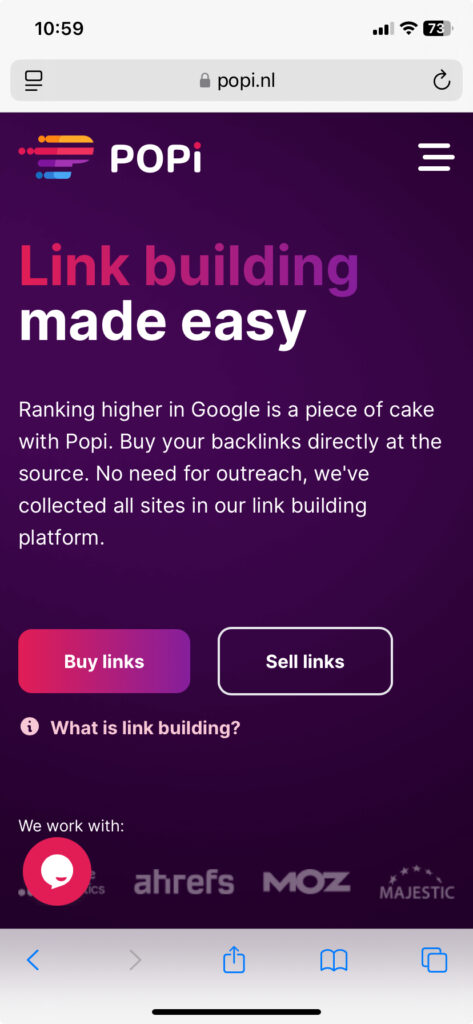
Blog
On-page SEO: what you need to know

Lilian Boers
-
30 October 2025
-
11 minute read

Having your own website is great, but it’s only the first step. To make your site truly work for you, it needs to be seen. Whether you’re trying to sell products, share insights, or publish stories, you want people to actually find your website. That’s where SEO comes in - and specifically, on-page SEO. Below, we’ll walk through what on-page SEO is, why it matters, and how to get it right.
What is on-page SEO?
SEO stands for Search Engine Optimization: a set of techniques that help your website rank higher in search engines like Google. SEO generally falls into three categories: technical SEO, content, and authority.
Technical SEO focuses on the behind-the-scenes aspects of your site: speed, usability, and structure. Then there’s content: what you actually publish. Finally, you build authority by earning trust and credibility. But before you can do that effectively, you need to nail your on-page SEO.
On-page SEO covers everything that happens on your website, the things you can directly control to make your pages more search-friendly. This includes elements like your page titles, headers, meta descriptions, images, and overall content structure. Let’s take a closer look at the key parts of strong on-page SEO.

The key elements of on-page SEO
Let’s dive a little deeper into the elements of on-page SEO. There are plenty of steps you can take to give your on-page SEO a real boost. Below, you’ll find a clear overview of the key areas to focus on — the essential checkpoints to work through when optimizing your website’s on-page SEO.
1. Keyword optimization
At the heart of SEO lies keywords. Think of Google as an enormous library — people type in words to find answers. If you sell “women’s winter coats,” you want to make sure your site actually uses that phrase in the right places.
But before you start dropping random keywords across your site, you need to do keyword research. This helps you find out what your target audience is actually searching for. Tools like Google Search Console, Ahrefs, or Moz can give you a clear picture. You can also look at what your competitors are ranking for or simply brainstorm what you’d search for yourself.
Once you’ve identified your main keywords, use them naturally throughout your website — in your titles, URLs, and first paragraphs. Sprinkle in related terms and synonyms to keep your content flowing naturally and avoid “keyword stuffing.”
2. Titles and meta descriptions
Your title tag is the clickable headline that shows up in Google search results, and it’s one of the most important on-page factors. Ideally, it should include your main keyword right at the beginning.
Below that comes the meta description — a short, catchy summary (around 160 characters) that tells users what your page is about. Think of it as your mini elevator pitch to convince someone to click. Include your main keyword and, if possible, a small call to action.
3. URL structure
Clean, descriptive URLs help both users and search engines understand what a page is about.
✅ Good: www.website.com/on-page-seo-tips
❌ Bad: www.website.com/?p123=fgjn
Keep your URLs short, relevant, and free of unnecessary words or characters.
4. Header tags
Headers (H1, H2, H3, etc.) bring structure to your content. The H1 is your main title, H2s are your subheadings, and H3s sit under those. They make your page easier to read and help Google understand the hierarchy of information.
Example structure:
H1 – On-page SEO
H2 – Key elements of on-page SEO
H3 – Keyword optimization
H3 – Titles and meta descriptions
5. Content quality and readability
No one wants to land on an empty website. Your content is what keeps visitors engaged — but it has to be useful, unique, and easy to read.
Write with your audience in mind and aim for E-E-A-T: Experience, Expertise, Authoritativeness, and Trustworthiness. This is Google’s framework for determining content quality. Show your knowledge, cite credible sources, and be transparent about who’s behind the content.
Break up your text into short paragraphs, use bullet points where needed, and leave plenty of white space. Include internal and external links to guide readers toward related information and help search engines crawl your site more effectively.
Don’t forget visuals — photos, graphics, and videos make your page more engaging and also help with SEO when used correctly.

6. Images and alt text
Images add context and make your pages more inviting, but they also play a role in SEO. Use descriptive file names (for example, on-page-seo-checklist.jpg instead of image123.jpg) and always include alt text.
Alt text is a short description that tells search engines (and visually impaired users) what the image shows. Include relevant keywords naturally where it makes sense.
7. Internal and external links
Internal links connect your pages and help visitors (and Google) understand how your site is structured. They also make it easier for people to explore related content.
External links, meanwhile, can strengthen your content’s credibility. Linking to trustworthy sources — for example, research papers or official websites — shows Google that your content is well-researched and reliable.
8. Page speed
A slow website is a dealbreaker. Users won’t wait around for a page to load, and Google knows it.
To improve your site speed:
- Compress your images or use modern formats like WebP
- Minimize JavaScript and CSS where possible
- Use a reliable hosting provider
Even small improvements can make a big difference in user experience and rankings.
9. Mobile friendliness
These days, most searches happen on mobile devices — so if your website doesn’t look good on a phone, you’re in trouble.
Google uses mobile-first indexing, meaning it primarily looks at your site’s mobile version when ranking pages. Make sure your design adapts smoothly to all screens and test it regularly with Google’s Mobile-Friendly Test.
Your visitors shouldn’t have to zoom in or squint to navigate — large buttons, clear menus, and simple layouts go a long way.

10. Structured data
Finally, don’t overlook structured data. This code helps search engines better understand your content and can earn you rich snippets - enhanced listings that show extra information like FAQs, ratings, or product details directly in search results.
Rich snippets can dramatically improve your click-through rate and make your page stand out from the competition.
How to improve your on-page SEO
If you’re looking to boost your on-page SEO, here’s where to start:
- Know your audience. Understand who you’re writing for and what they’re searching for.
- Do keyword research. Identify high-value terms that your audience actually uses.
- Focus on user experience. Optimize page speed, navigation, and mobile usability.
- Use structured data. Add elements like FAQs, how-to guides, or reviews to make your content richer and more visible.
Why on-page SEO matters
SEO helps your website rank organically — without paying for ads. On-page SEO is one of the most crucial parts of that process.
By optimizing your pages, you make it easier for Google to understand your site’s content, which can lead to higher rankings, better visibility, more clicks, and ultimately, more leads or sales.
In short: on-page SEO is what turns a simple website into one that actually gets seen.
About Lilian Boers
Een echte taalfanaat, dat ben ik. Als taalgekkie was de keuze snel gemaakt welke opleiding ik wilde gaan volgen: de opleiding Communicatie. Na het afstuderen heb ik de schoolbanken ingeruild voor een bureaustoel bij Popi. Hier werk ik al een dikke drie jaar als tekstschrijver, met veel plezier. Inmiddels heb ik al duizenden teksten op de teller staan met onderwerpen die uiteenlopen van A tot Z.

Lilian Boers
Buy your links directly at the source
Discover the secret of thousands of SEO marketers and agencies, link building was never this easy.
Register for more infoYou might also like
View all blogs
How to make your website SEO-friendly in 8 steps
-
19 November 2025
-
11 minute read

Everything you need to know about local SEO
-
07 November 2025
-
9 minute read

How to select the right website for your external link
-
30 October 2025
-
9 minute read

Start with link building, join our platform now
Popi is a linkbuilding platform for SEO-marketers and business owners who want to improve their websites position.
Register for more info



